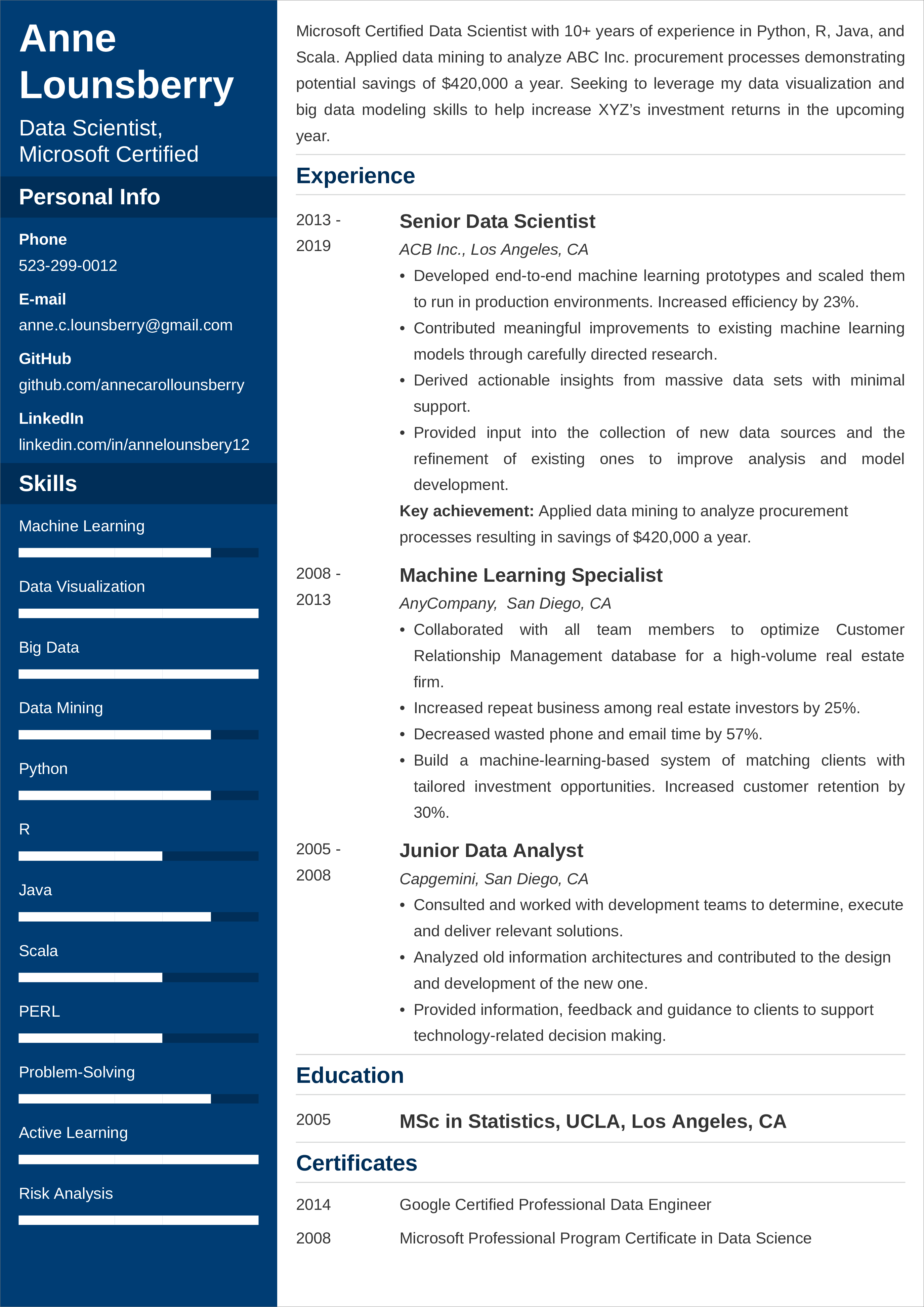In today’s data-driven world, the demand for skilled data scientists is on the rise. As companies strive to make sense of the vast amounts of data available to them, they need professionals who can extract valuable insights and drive informed decision-making. If you aspire to embark on a career in data science, having a well-crafted data science resume is essential. In this article, we will explore what a data science resume is, why you need one, what to include in it, and how to write an impressive data science resume that will catch the attention of employers.
What is a Data Science Resume?
A data science resume is a document that showcases your skills, experiences, and achievements in the field of data science. It serves as a marketing tool to present yourself to potential employers and convince them that you are the right fit for their organization. A well-written data science resume should highlight your technical expertise, problem-solving abilities, and relevant experience in handling and analyzing data.
Why Do You Need a Data Science Resume?
In the competitive job market, a data science resume is your first opportunity to make a lasting impression on employers. It is the gateway to securing interviews and ultimately landing your dream job in the field of data science. A well-crafted resume not only showcases your qualifications but also demonstrates your ability to communicate effectively and present complex information in a concise and organized manner. It helps employers assess your suitability for the role and determines whether you possess the skills and experiences they are looking for.
What to Include in a Data Science Resume
When crafting your data science resume, it is important to include the following key sections:
- Contact Information: Provide your full name, phone number, email address, and LinkedIn profile link. Make sure your contact information is easily visible at the top of the resume.
- Summary or Objective: Write a summary or objective statement that highlights your key skills, experiences, and career goals. Tailor this section to the specific job you are applying for.
- Education: List your educational background, including degrees earned, institutions attended, and dates of completion. Include any relevant coursework or certifications.
- Technical Skills: Highlight your proficiency in programming languages, statistical analysis tools, machine learning algorithms, and data visualization techniques. Be specific and provide examples of projects or applications where you have used these skills.
- Work Experience: Detail your professional experience, starting with your most recent position. Include the company name, job title, dates of employment, and a brief description of your responsibilities and accomplishments. Focus on quantifiable achievements and highlight your data science-related projects.
- Projects and Publications: Showcase any data science projects or research you have worked on, along with any publications or presentations related to the field.
- Awards and Honors: Mention any awards, scholarships, or honors you have received in recognition of your achievements in data science.
- References: Optionally, you can include references from professors, mentors, or previous employers who can vouch for your skills and character.
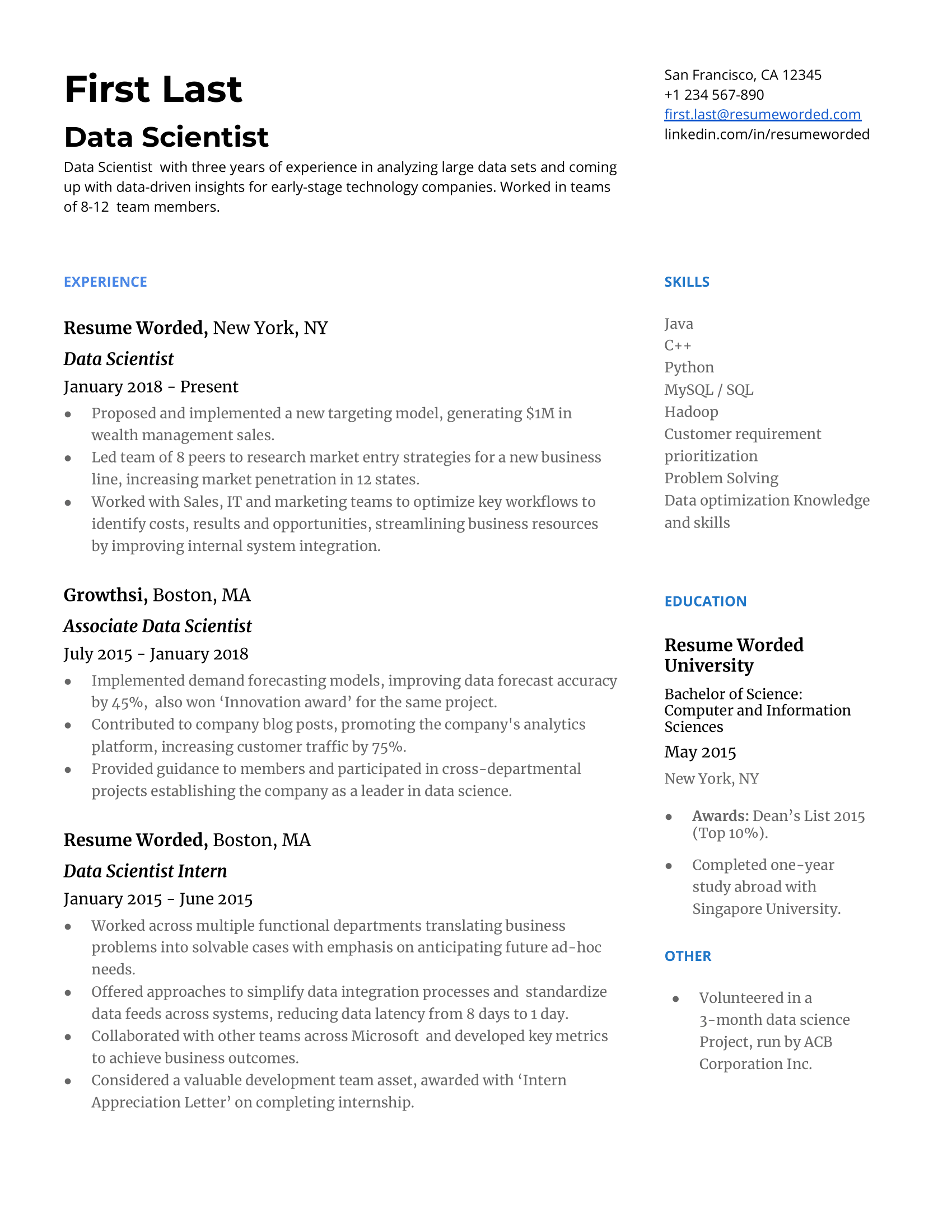
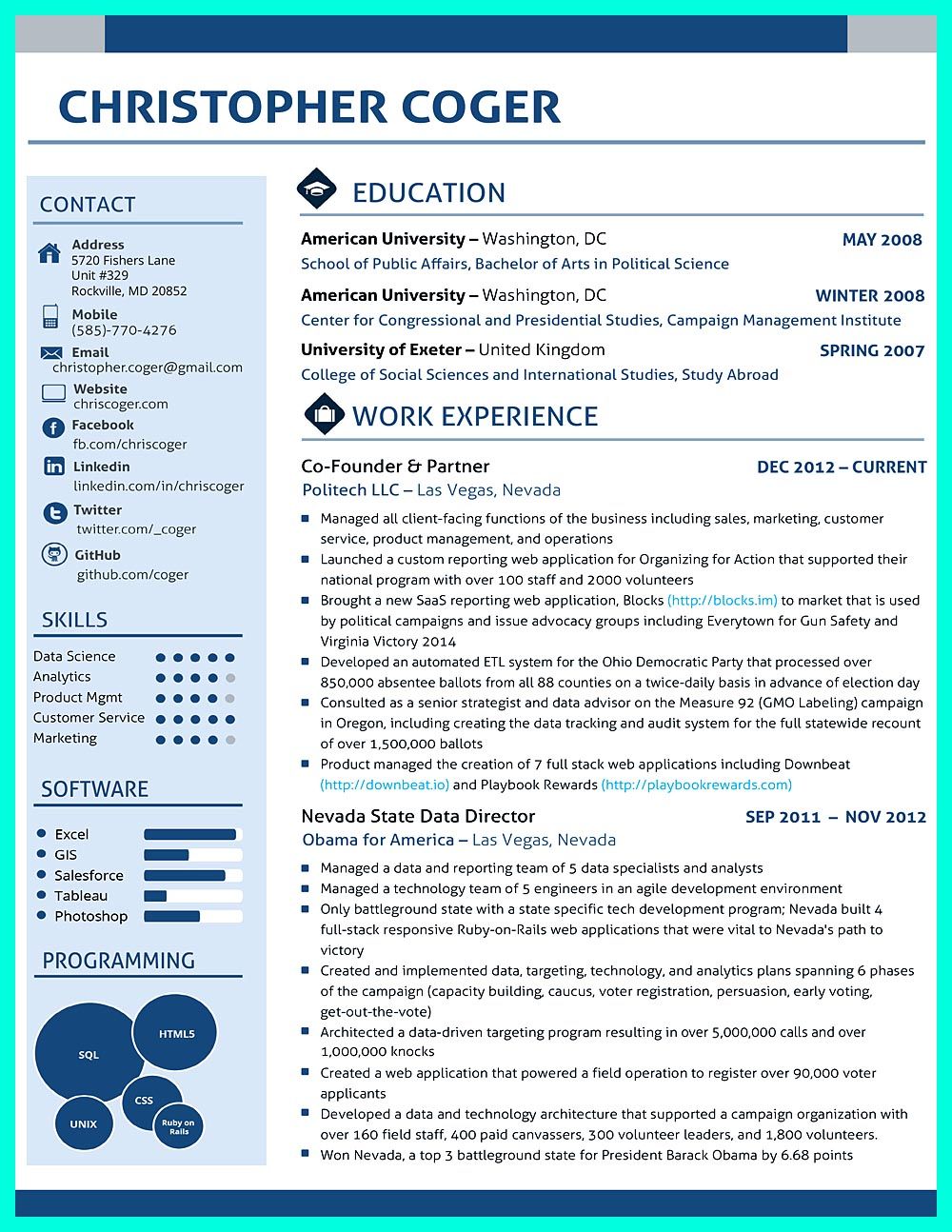
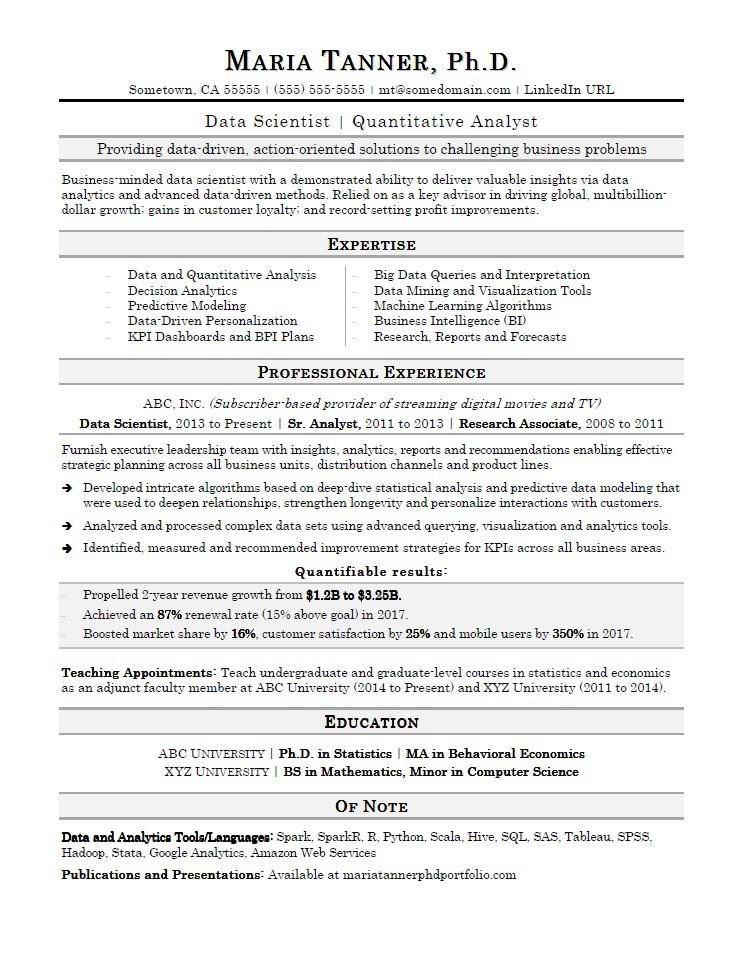
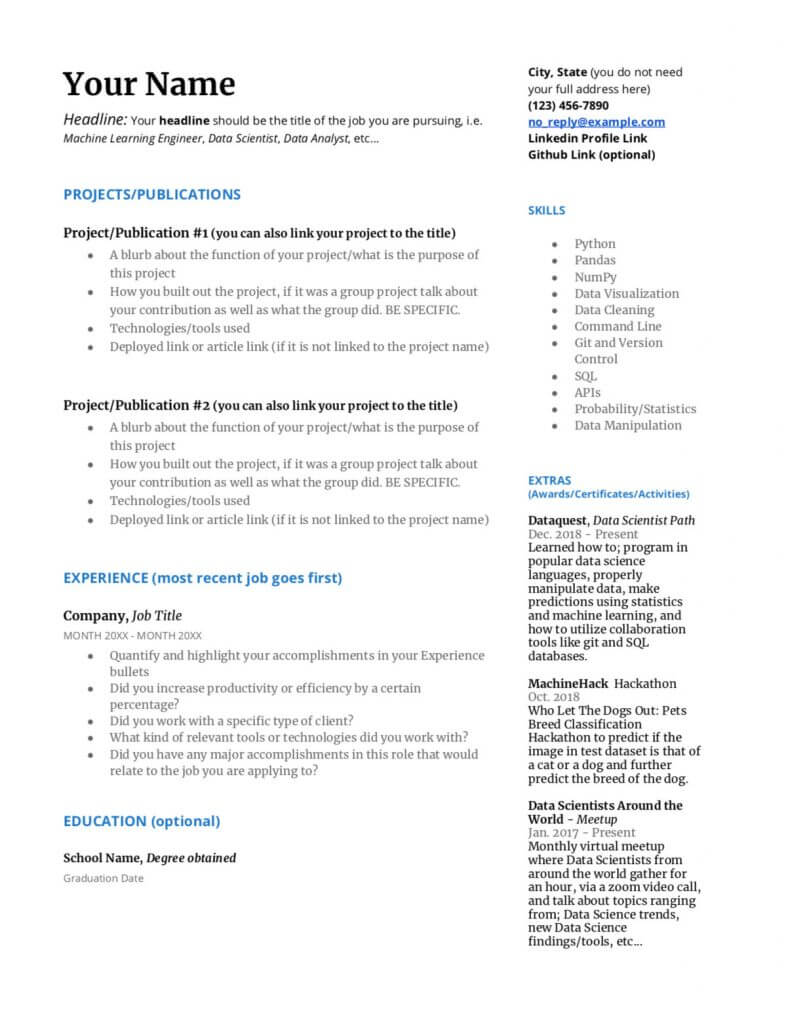
How to Write a Data Science Resume
Writing an effective data science resume requires careful attention to detail and a clear understanding of the skills and experiences that employers are seeking. Here are some tips to help you write a standout data science resume:
- Tailor your resume to the job: Customize your resume for each job application by highlighting the specific skills and experiences that are relevant to the position. Research the company and job description to understand what they are looking for, and emphasize those aspects in your resume.
- Use action verbs: Start each bullet point in your work experience section with a strong action verb to describe your accomplishments. This helps to convey a sense of proactivity and achievement.
- Quantify your achievements: Whenever possible, quantify your accomplishments with numbers and statistics. This helps to demonstrate the impact of your work and provides concrete evidence of your skills and abilities.
- Showcase your technical skills: Highlight your proficiency in programming languages, statistical analysis tools, machine learning algorithms, and data visualization techniques. Provide examples of projects or applications where you have applied these skills to solve real-world problems.
- Keep it concise: While it is important to provide enough detail to showcase your skills and experiences, be mindful of keeping your resume concise and to the point. Aim for a length of one to two pages and use bullet points to convey information efficiently.
- Proofread and edit: Before submitting your resume, proofread it carefully to catch any spelling or grammatical errors. Pay attention to formatting and ensure consistency in font style and size. Ask a trusted friend or mentor to review your resume for feedback.
By following these guidelines and putting in the effort to craft a well-structured and compelling data science resume, you will increase your chances of standing out from the competition and securing the data science job of your dreams.
Data Science Resume Template Word – Download
